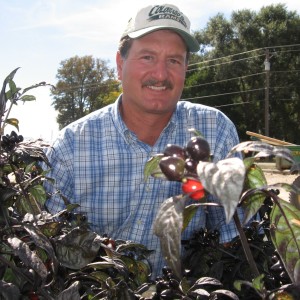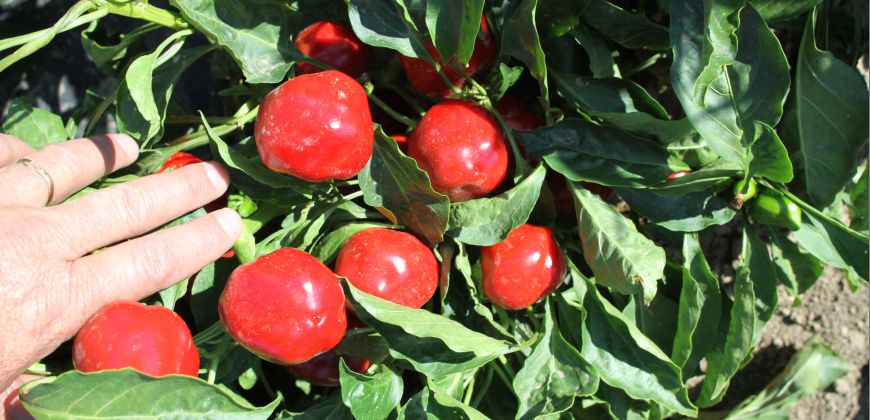There are a number of pepper names familiar to consumers – jalapeno, habanero, serrano – but many shoppers may not have heard of Pueblo Poppers. As it turns out, Pueblo Poppers are just one example of the new varieties that are being developed by Michael Bartolo, a researcher at Colorado State University’s Arkansas Valley Research Center[1]. The center is part of the Colorado Agricultural Experiment Station which oversees eight research centers across the state.
 Pueblo Poppers
Pueblo Poppers
“Pueblo Poppers have some unique culinary attributes,” said Bartolo. “They are derived from an heirloom race of chile pepper that has been grown in this region for generations.”
These peppers can be used by home chefs and restaurants who are looking for peppers with a bit of spiciness but maintain the original flavor and heritage that people from the region will recognize. The fruit of the Pueblo Popper are mostly round and 2-2.25 inches in diameter, making it ideal for stuffing with meats or other vegetables.
For Bartolo, the peppers have personal significance.
“These peppers were developed from seeds handed down to me from my father and uncle over 25 years ago,” said Bartolo. “We have developed more than 100 distinct lines of peppers, some of which will be viable, although many will not.”
Of the distinct lines that Bartolo has selected over the years, it is likely that fewer than ten will be commercially successful.
The peppers have been grown by several farmers in the Pueblo area for the past two years and should be available on a wider basis at state-wide farmers markets in 2016.
Unique varieties
“Part of the fun of this process is to see what works and what does not,” said Bartolo. “We are doing the research so that we can make the best peppers available to industry and consumers.”
“The unique pepper varieties developed by CSU have not only improved the yield and quality of the crop we grow, but have also helped us expand new marketing opportunities,” said Dominic DiSanti who runs DiSanti Farms in Pueblo and is president of the newly-formed Pueblo Chile Growers Association[2]. DiSanti is himself a graduate of CSU’s College of Agricultural Sciences which oversees the Colorado Agricultural Experiment Station. DiSanti received bachelor’s degrees in animal science, soil and crop sciences, and agricultural business, all in 2009.
Sustainability
“Peppers are just one type of crop that researchers housed at our state-wide centers are working on,” said Tom Holtzer, deputy director of the Agricultural Experiment Station[3]. “An essential aspect of our work is finding ways to produce new varieties of crops that utilize our water resources most optimally. Pueblo Poppers are an excellent example of how our research continues to make farming more sustainable.”

 Pueblo Poppers
Pueblo Poppers